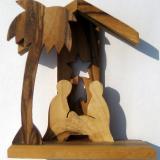One of the nicest Christian gifts you can give a child is a kids cross necklace. The gift of a cross necklace is both personal and meaningful, making it ideal for any occasion, and as there are so many different cross styles available, it is fairly easy to find a kids cross necklace to suit nearly anyone. Here are five great tips for choosing a necklace to suit the recipient perfectly.
Choose the Right Size
When choosing a kids cross necklace, be sure to select one that will fit the child you will be giving it to. Some crosses are made just for children, while others may look as if they are, but may have chains that are too long. To get a perfect fit, prevent tangles, and make sure the cross looks right when worn, either select a cross necklace with an adjustable cord, or purchase a cord or chain separately. Finally, keep in mind that jewelers have the ability to cut chains for a customized fit.
Look For an Appealing Style
Like adults, kids definitely have their own senses of style. Keep in mind that while a certain kids cross necklace style might appeal to your sense of taste, it’s most important to choose a religious cross necklace that will appeal to the child’s individual sense of style.
Select an Appropriate Material
While it might be tempting to purchase a cross made with silver, gold, or even platinum, remember that kids can be tough on their possessions, and that they often lose small items. While you don’t want to present a child with a cross that will turn his or her neck green, the temptation to purchase a cross made from cheap metal can be strong. Instead, why not look into an olivewood cross necklace for boys, or a cross made with mother of pearl for girls?
Watch Out for Overpriced Items
Unless you decide to purchase a kids cross necklace made with precious metal or gemstones, you shouldn’t have to pay more than about twenty dollars for it. You can even find fantastic crosses for kids for less than ten dollars.
Keep Personality and Occasion in Mind
Finally, be sure you keep the recipient’s personality in mind, and give some thought to the occasion you are presenting the cross necklace for, as well. Making a careful selection will help to ensure that the child who receives the cross likes it.
You’ll find a wonderful selection of crosses, cross necklaces, and other outstanding Christian gifts at HolyLand-Gifts.com. Not only do we carry an excellent array of items handcrafted by artisans in the Holy Land, our prices are reasonable, as are shipping charges. Spend just a few minutes browsing, and you’ll almost certainly find just what you are looking for.

